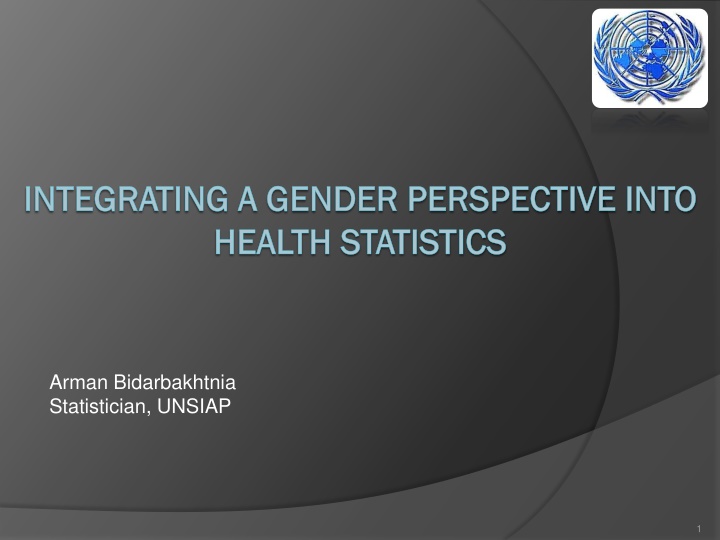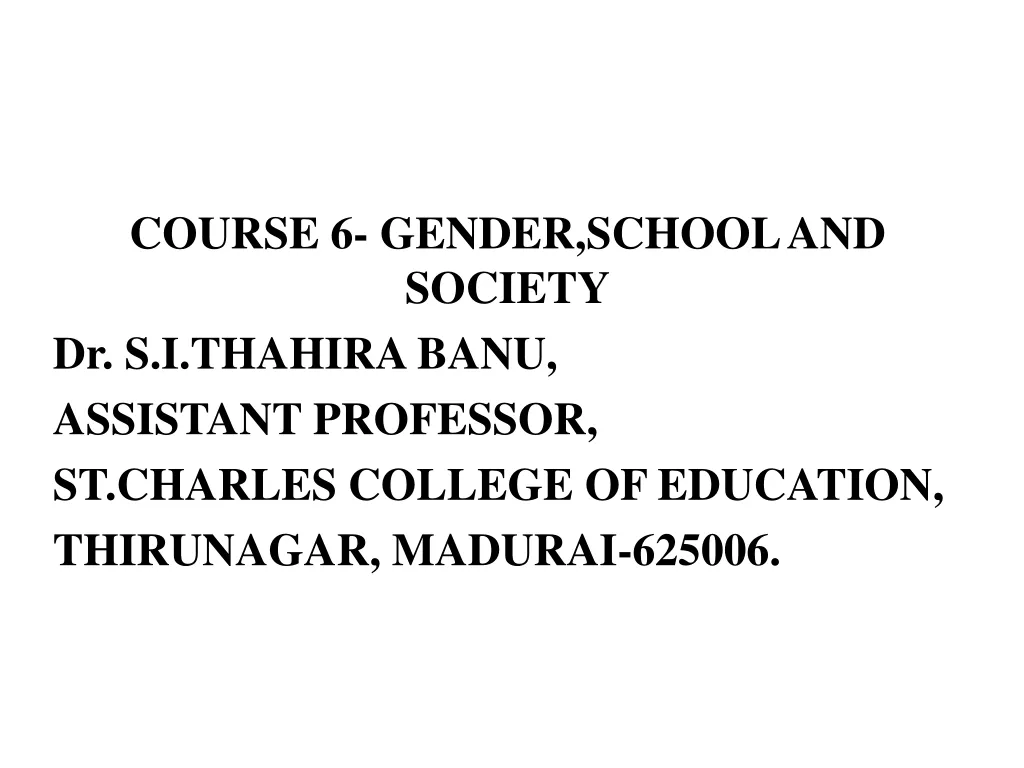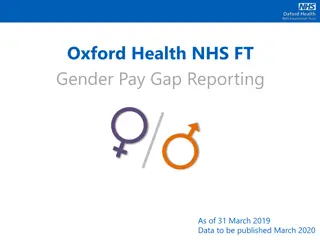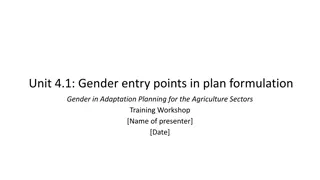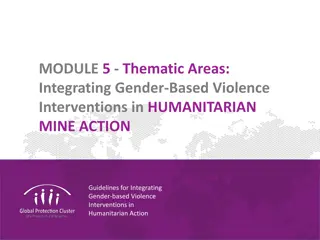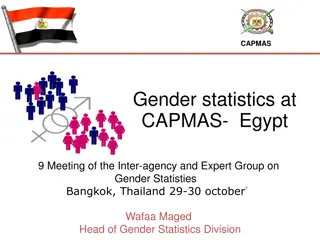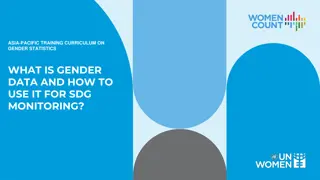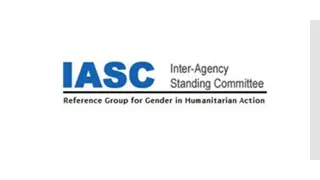Integrating a Gender Perspective into Health Statistics
This presentation focuses on integrating a gender perspective into health statistics, with a special emphasis on areas such as health and nutrition of children, maternal health, mortality, HIV/AIDS, and health risks related to lifestyle. It delves into gender-specific data needs, measurement challenges, and specific issues related to children's health, maternal mortality, and mortality rates. The visuals provide insights into mortality rates, maternal health data needs, and geopolitical variations in health outcomes.
Download Presentation

Please find below an Image/Link to download the presentation.
The content on the website is provided AS IS for your information and personal use only. It may not be sold, licensed, or shared on other websites without obtaining consent from the author.If you encounter any issues during the download, it is possible that the publisher has removed the file from their server.
You are allowed to download the files provided on this website for personal or commercial use, subject to the condition that they are used lawfully. All files are the property of their respective owners.
The content on the website is provided AS IS for your information and personal use only. It may not be sold, licensed, or shared on other websites without obtaining consent from the author.
E N D
Presentation Transcript
INTEGRATING A GENDER PERSPECTIVE INTO INTEGRATING A GENDER PERSPECTIVE INTO HEALTH STATISTICS HEALTH STATISTICS Arman Bidarbakhtnia Statistician, UNSIAP 1
Areas of focus Health and nutrition of children Maternal health Mortality and causes of death HIV and AIDS Health risks related to life style 2
Health and nutrition of children Gender issues: Data needs (by sex): -Death (under 1&5) -Ever born & surviving (by age of mother) -Vaccination Measurement: -Reporting error/bias -Survival chance: Non-biological factors -Rare events (wide CIs) -Health care discrimination -Symptoms -Age disaggergation (Nutritional status; age 2) -Nutritional status -Health exp -Nutritional status 3
Under 5 mortality rate per 1,000 live birth by sex, 1995 - 2000, 2000 - 2005 and 2005 2010 (Source: UN 2010) 180 F M 150 120 90 60 30 0 2005 - 2010 2005 - 2010 1995 - 2000 2000 - 2005 1995 - 2000 2000 - 2005 2005 - 2010 1995 - 2000 2000 - 2005 2005 - 2010 1995 - 2000 2000 - 2005 2005 - 2010 1995 - 2000 2000 - 2005 2005 - 2010 1995 - 2000 2000 - 2005 1995 - 2000 2000 - 2005 2005 - 2010 World Africa Asia Europe latin America & Caribbean Northen American Oceania 4
Maternal Health Gender issues: Data needs (for at least two points in time): -Maternal death Measurement: -Misclassification -Outcome: mortality -Rare events (wide CIs) -Live birth -Access to prenatal care -Concepts (types of contraceptive) -Underreporting (abortions) -Disaggregation (age, m.s., edu, geo, eco, hh,..) -Visits to health facilities -Access to skilled personnel -Contraceptive use -Attendance by skilled personnel -Who are at more risk? 5
Maternal Mortality Ratio (MMR), 2005 820 800 600 430 400 400 330 200 130 0 World Latin America and the Caribean Asia Oceania Africa Source: WHO, Maternal Mortality in 2005 (2007) 6
Mortality and causes of death Gender issues: Data needs (by age and sex): Measurement: -Outcome: Life expectancy -Underreporting (sex-selective) -Death -Resilience (M vs F) -Misreporting & misclassification (cause of death) -Cause of death -Main causes of death (M vs F) -Population distribution -Cancer: distribution 7
HIV and AIDS Gender issues: Data needs (by age and sex): -Prevalence Measurement: -Risk: F vs M -Sensitive topic - Sex bias in HIV testing in surveys -Death -Knowledge: M vs F -HIV testing - Bias towards socially desirable answers -Access to medicine -Youth: condom use (M vs F) -High risk sexual behavior -Knowledge 9
Percentage of women among HIV-positive adults by region, 2001 and 2007 80 59 59 60 54 54 51 50 50 46 37 37 40 32 32 31 30 28 27 27 27 26 21 18 17 20 2001 2007 0 Source: UNAIDS, Report on the Global AIDS Epidemic (2008) 10
Health risks related to life style Gender issues: Data needs (by age and sex): -Alcohol consumption Measurement: -Cultural/social habits: Drinking & smoking, -Limited information on physical activities -Smokers -Obesity -Obese population -Difficulty in identifying risk for different levels of alcohol consumption -Exposure to indoor pollution (F) -Physical activities -Types of fuels -Exposure to injuries (M) -Injuries 11
Sources of data Civil Registration and Vital Statistics (CRVS) Censuses Household surveys: DHS, MICS, HIES, WHS, TUS 13
